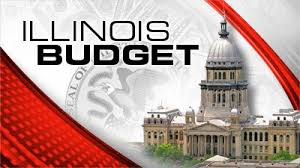The FY21 budget and “Budget Implementation Act” spending bills were signed into law on Wednesday, June 10. This clears the way for the documents to be used to operate the State’s business in Fiscal Year 2021, starting July 1. The bills were SB 264 (budget) and HB 357 (budget implementation law).
The Constitution of Illinois requires that the General Assembly, each year, enact a balanced budget (Article VIII, subsection 2(b)). Although State revenues have fallen off the table during the COVID-19 pandemic and these lost revenues are expected to continue into FY21, the majority party made no significant cuts in the FY21 budget to help offset the loss in revenues. SB 264, for the most part, held spending flat at FY20 levels, which included significant increases compared to FY19.
To cover the losses from declining revenue, Democrats made clear that they would rely on borrowing, including $1.2 billion in previously authorized emergency borrowing powers and up to $5 billion in borrowing from the U.S. Federal Reserve through the Municipal Liquidity Facility, a new financing avenue created by Congress in the wake of the COVID-19 pandemic. This massive borrowing scheme was authorized in SB 2099 as part of the overall budget package, in lieu of cuts to FY20 levels and despite budget exercises that GOMB asked state agencies to participate in last fall that would achieve budget savings of up to 6 percent at various agencies.
House Republicans unanimously voted “No” against the Democrats’ borrow-and-spend budget.
